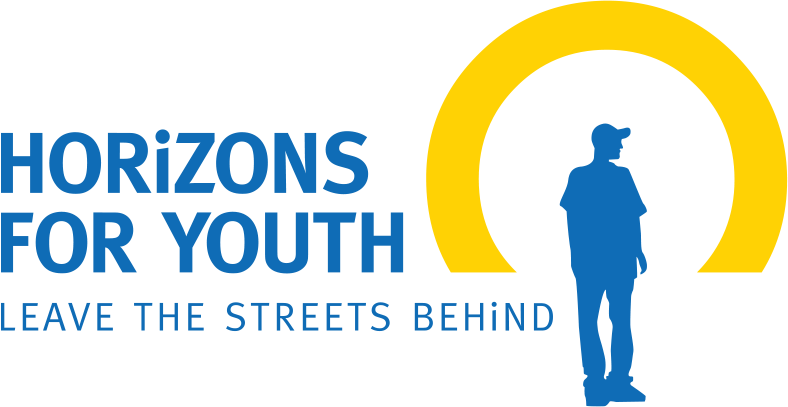Youth Homelessness in Canada
35,000-40,000 youth between the ages of 13-24 years old experience homelessness each year in Canada. On any given night, there are between 6,000-7,000 homeless young people.
Age of Canada's Homeless Population
Gender Identity of Homeless Youth
Causes of Youth Homelessness
Family Conflict: 92% of homeless youth in the Leaving Home report (2014) said that conflict with their parents or caregivers was a factor that contributed to their eventual homelessness, while 72% reported that it was a major cause.
Mental Health & Addictions Challenges: Youth may be pushed into homelessness because of their own undiagnosed and untreated mental health or addictions challenges, or because of their parents’ mental health and addictions challenges. Many youth have experienced mental health distress prior to becoming homeless, with 14.8% of youth in the Leaving Home survey (2014) reporting to have attempted suicide prior to becoming homeless. The trials of homelessness only exacerbate such distress, with 8% of respondents having attempted suicide after becoming homeless, 71.7 % reporting difficulties sleeping and 60% reporting feeling lonely at least once a week.
Abuse: Almost 60% of homeless youth surveyed in Leaving Home (2014) reported either physical, emotional or sexual abuse as being a cause of their eventual homelessness.
Lack of affordable housing: Particularly in the City of Toronto, homeless youth face many barriers finding stable housing such as the low vacancy rate and limited affordable housing options. Moreover, homeless youth may experience discrimination by perspective landlords because of the youth’s age or their reliance on social assistance.
Average Rent in Toronto ($CAD)
Rental Vacancy rate (%)
Lack of employment opportunities: Particularly for youth with low levels of education, it is very difficult to find jobs that pay a living wage. The majority of available employment opportunities for homeless youth are part-time, seasonal, low-wage and/or without benefits.
Aging out of Child Protective Services: A high number of homeless youth experienced childhood abuse and involvement with Child Protective Services, often beginning at a very young age. At 18 years old, youth “age out” of this system and many lack the support they need to transition to independent living, leading to their eventual homelessness.
Homophobia/transphobia: Sadly, a disproportionate number of homeless youth identify as LGBTQ2S+. Youth in this community may become homeless because of rejection, violence or abuse in the homes of their parents or guardians. Homophobia and transphobia in our society may also prevent LGBTQ2S+ youth from finding employment, advancing their education and/or accessing needed support.
Marginalization: Being a member of a marginalized group can significantly increase one's likelihood of experiencing homelessness. These groups include, but are not limited to, Indigenous/First Nations individuals, members of racialized communities, low-income individuals and single parents.
Immigration: Many newcomers and refugees entering Canada are at risk of homelessness because of factors like poverty, discrimination, cuts to social programs, unrecognized foreign employment and educational credentials, delays in work permits and a lack of affordable housing options.
Youth experience of homelessness
The 2016 Without a Home Survey found that the homeless youth struggle in seven main ways:
Ongoing housing instability
High levels of chronicity (chronic or episodic homelessness, often meaning youth are homeless for over a year or multiple times in their lifetimes )
Nutritional deprivation
Declining mental health
Low school participation
Unemployment
Criminal victimization
These experiences impact one another, creating a cycle of homelessness that is very difficult to escape. Many young people repeatedly enter and exit periods of homelessness, attending school and/or being employed, but the challenges they face can prevent them from achieving their long-term goals in these areas.
differences between youth and adult homelessness
Experiencing homelessness at any age is extremely difficult. Homeless youth, however, face different challenges than adults. Youth experiencing homelessness usually leave home when they are still dependents, giving them little experience in running their own household. Additionally, people under the age of 25 are continually undergoing significant developmental changes (physical, cognitive, emotional and social). Experiences that individuals have at this age can be formative and have an impact on their future decision-making, social relationships, inclusion and educational/employment opportunities.
References
A. Noble, J.Donaldson, S. Gaetz, S. Mirza, I. Coplan, D. Fleischer (2014). Leaving Home: Youth Homelessness in York Region. Toronto: The Homeless Hub Press.
Stephen Gaetz, Bill O’Grady, Sean Kidd & Kaitlin Schwan. (2016). Without a Home: The National Youth Homelessness Survey. Toronto: Canadian Observatory on Homelessness Press.
